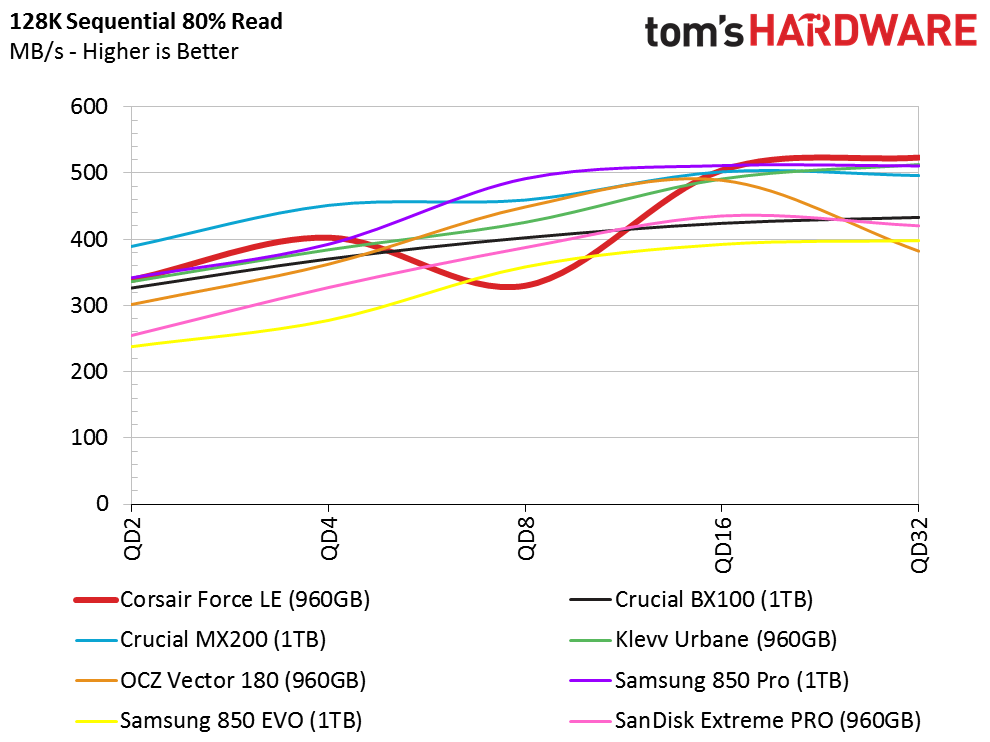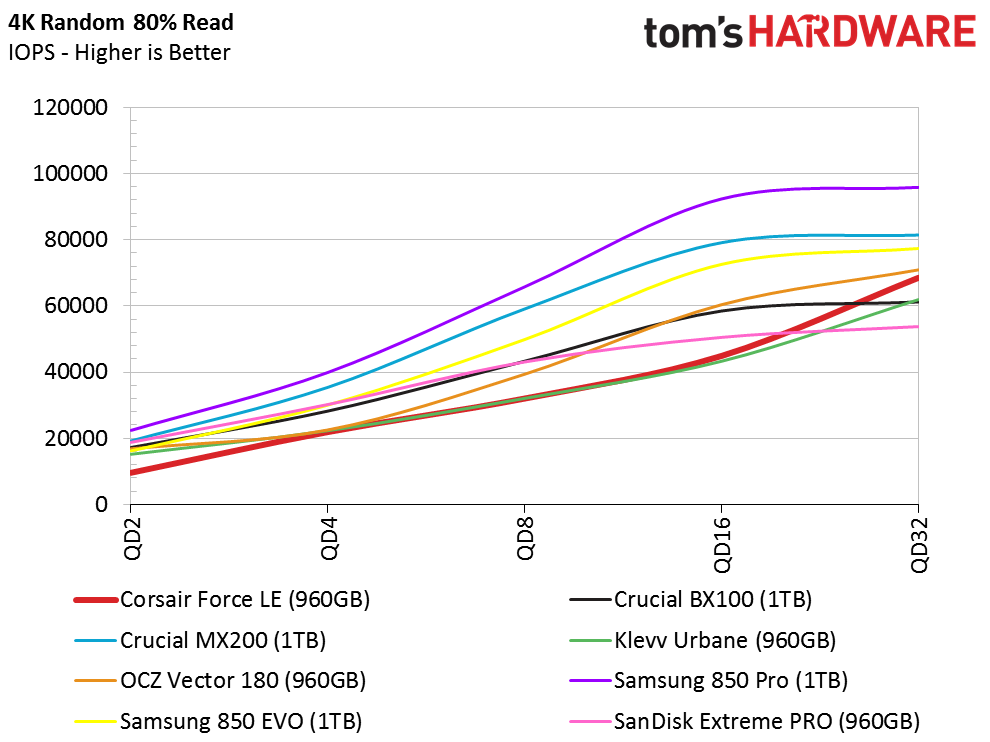Corsair Force LE SSD Review
The Corsair Force LE 960GB is a low-cost, high-capacity SSD that represents an excellent value in the entry-level space.
Why you can trust Tom's Hardware
Mixed Workloads And Steady State
80 Percent Sequential Mixed Workload
Our mixed workload testing is described in detail here, and our steady state tests are described here.
For the most part, Corsair's Force LE 960GB performs extremely well in our 80 percent sequential read test. The drive briefly exceeds its emulated SLC buffer at a queue depth of eight, but quickly recovers.
80 Percent Random Mixed Workload
Low random write performance leads to mediocre results in this metric. The Force LE's numbers are still higher than some of the other drives we've tested recently, but compared to the most popular incumbents, it falls to the bottom of the chart. This is a controller issue more than a flash issue. You can see the Klevv Urbane with the same controller, but MLC flash presents the same performance profile. Corsair can improve its standing with a firmware update, but that's going to depend on action from Phison.
Sequential Steady State
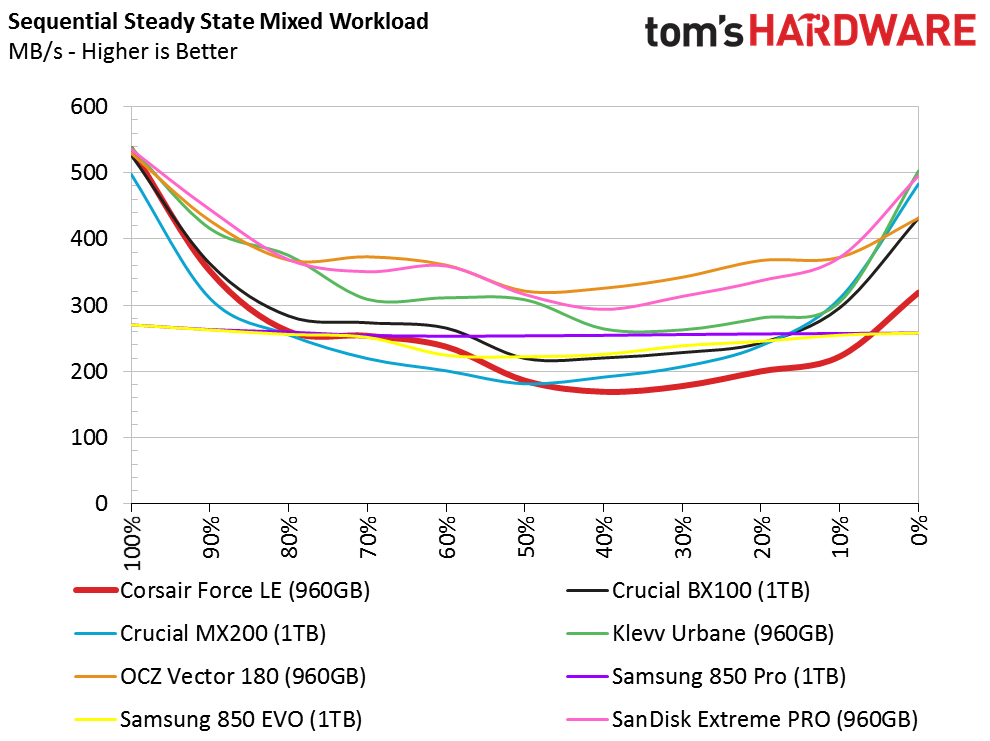
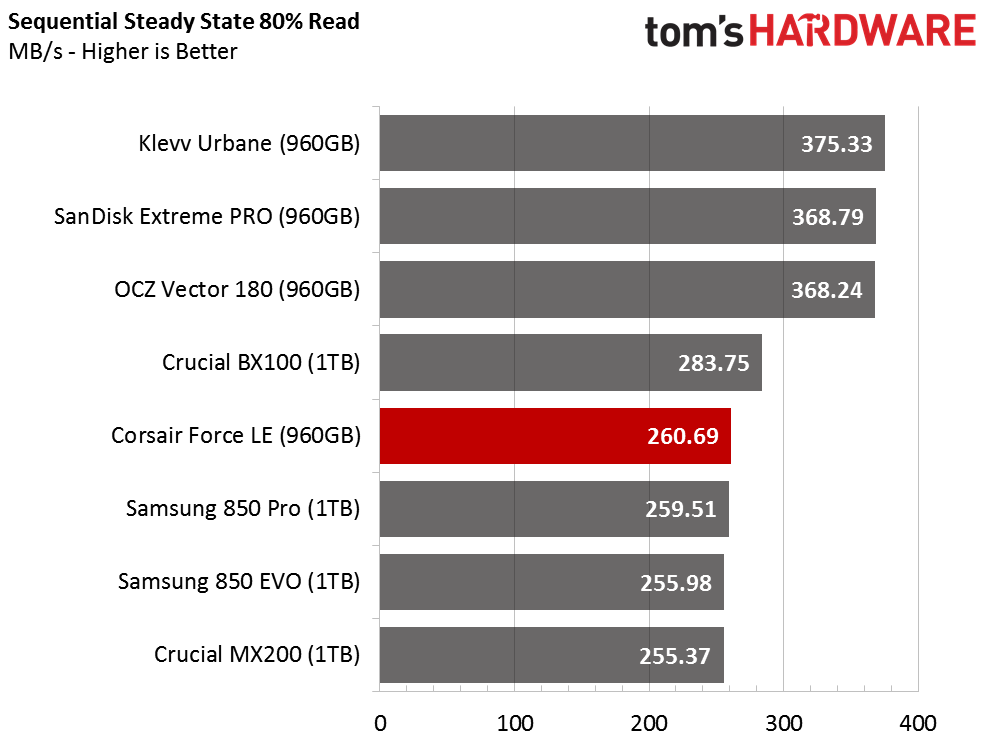
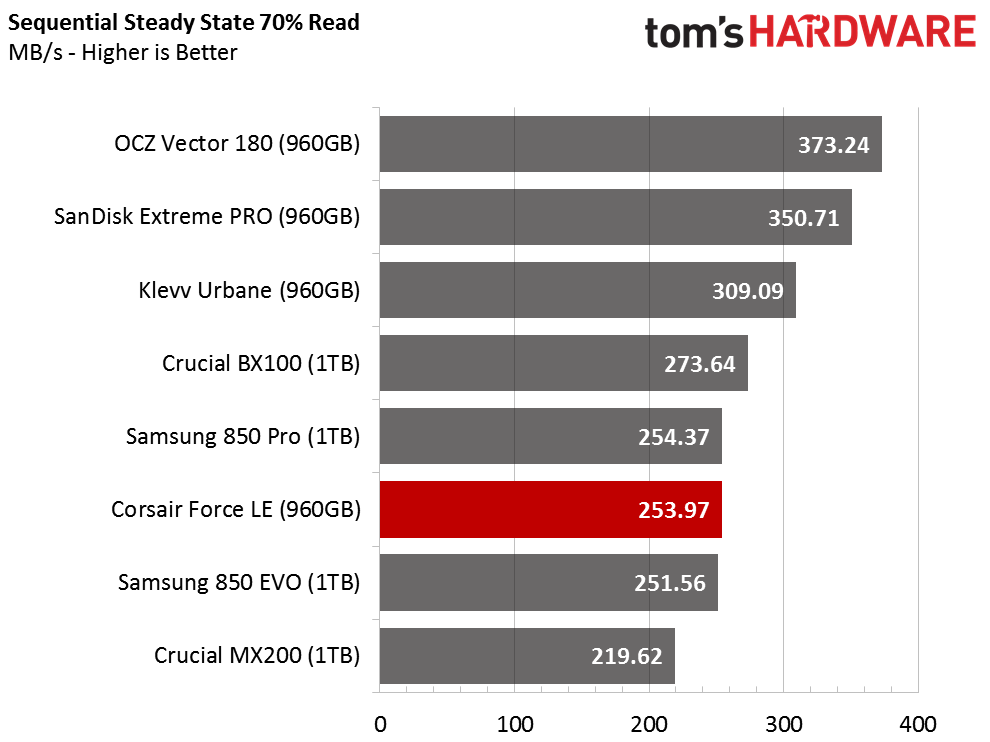
It shouldn't come as a surprise to see the TLC-based Force LE at the bottom of charts based on steady-state sequential data. In fact, it's more shocking to see this drive off the bottom in the two workloads that matter most—the 70 percent (workstation) and 80 percent (consumer) benchmarks.
Random Write Steady State
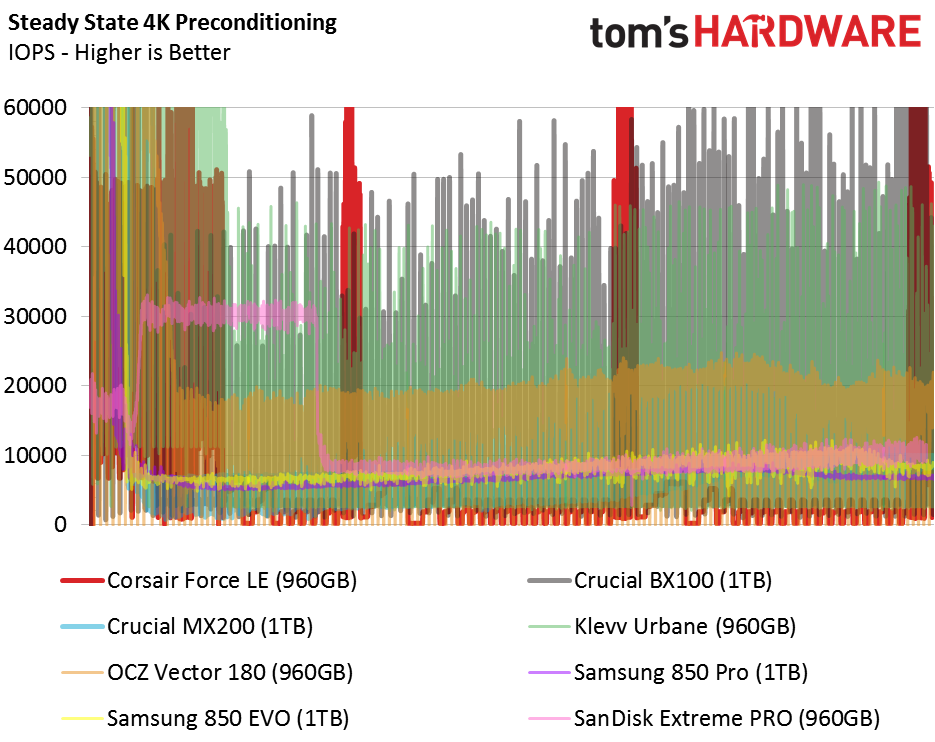

Corsair's Force LE 960GB is not a good candidate for RAID use. It suffers low random steady state performance and encounters wild peaks and valleys that lead to inconsistency.
Get Tom's Hardware's best news and in-depth reviews, straight to your inbox.
Current page: Mixed Workloads And Steady State
Prev Page Four-Corner Testing Next Page Real-World Software Performance
Chris Ramseyer was a senior contributing editor for Tom's Hardware. He tested and reviewed consumer storage.
-
captaincharisma a 960GB SSD for just a little over 200 bucks US? i know corsair is a quality brand but i don't trust that driveReply -
LordConrad I will never buy a TLC drive with NAND that was manufactured at less than 20nm. Sorry, I just don't trust it for reliability or endurance.Reply -
BorgOvermind Why doesn't any manufacturer connect those internally in RAID 0 mode ? That would give double or even quad speed.Reply
